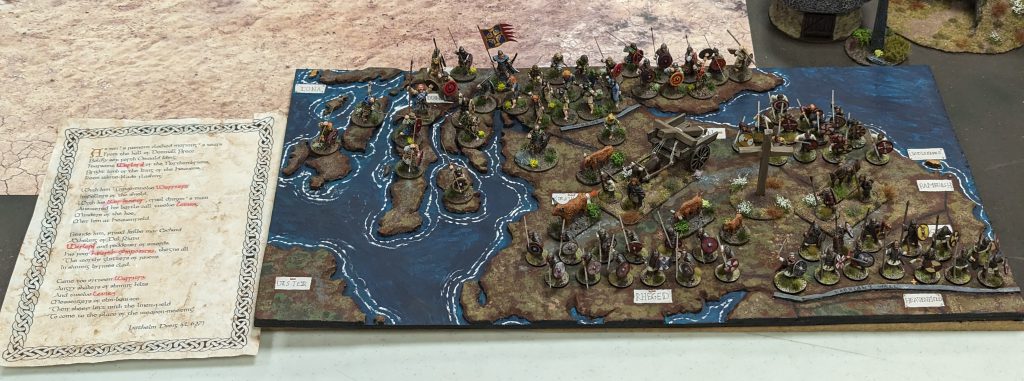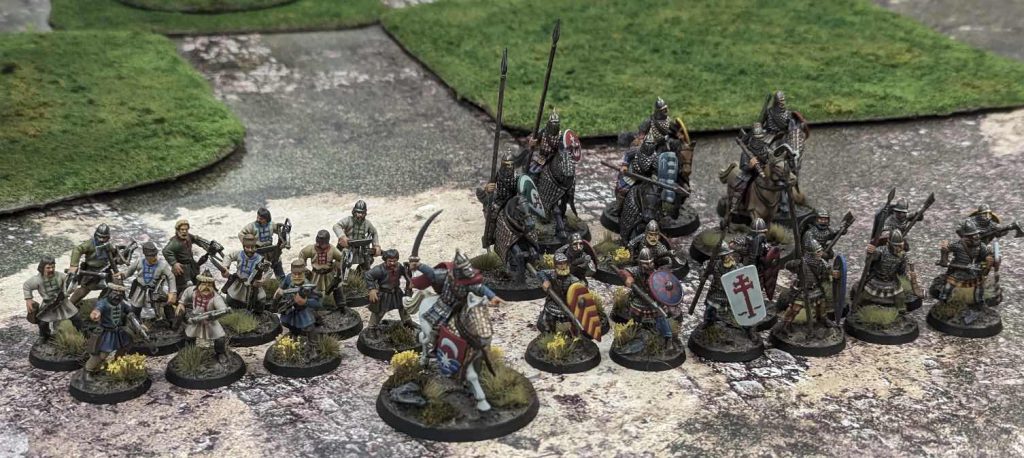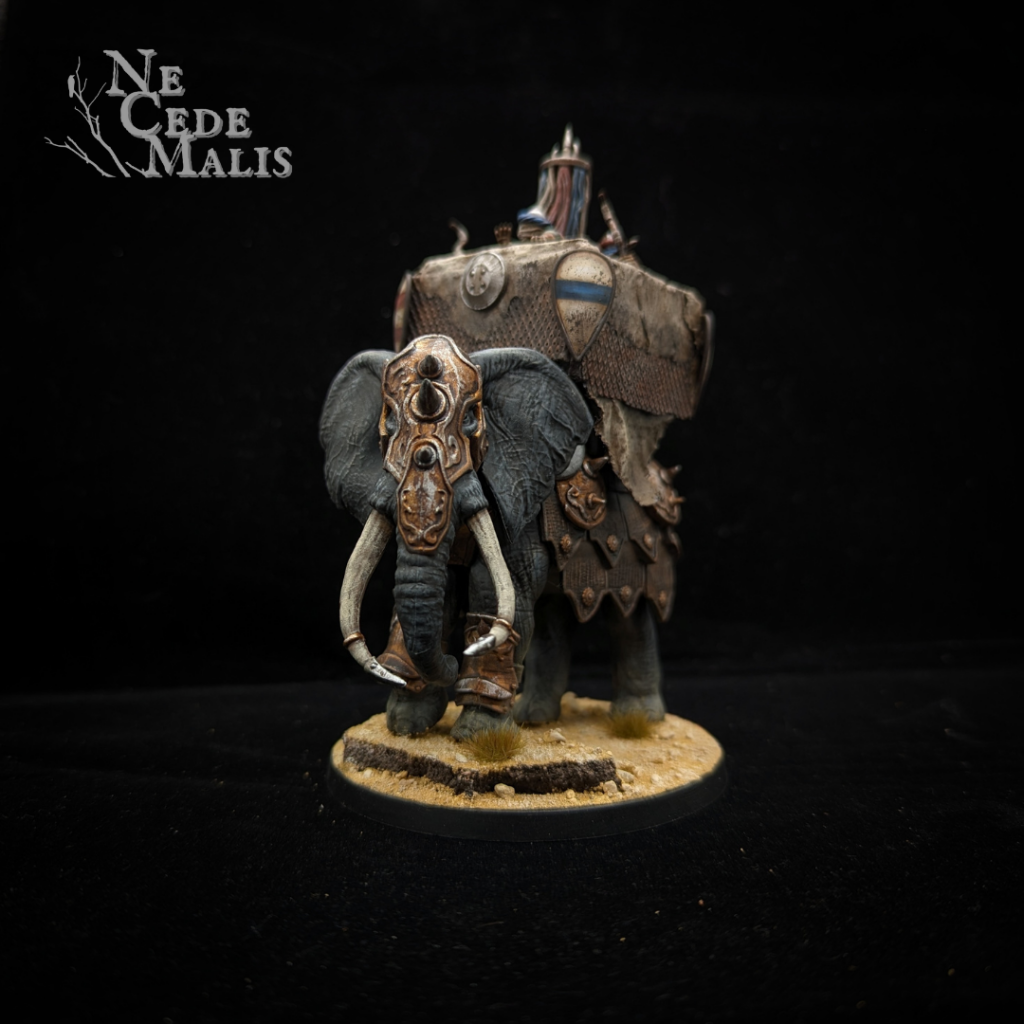Skål! I’m Ne Cede Malis, new to Goonhammer, and I’m here to tell you today about a little game that took over my hobby life a few years ago and hasn’t let go since.
Editors note: It’s SAGA Summer! Enjoy our coverage during the raiding season as we take a look at the factions, miniatures, and everything else you need to get started playing SAGA and earning massacre points.
What’s SAGA?
SAGA is the power fantasy of life as a bloodthirsty warlord of the Middle Ages, early Medieval era, or the age of Antiquity. If you want to be your own Achilles, Beowulf or Saladin and carve out your own (wait for it) saga in blood and fire*, then SAGA’s the game for you. You can find our review here.

It’s a game that takes a sandbox approach to historicals, allowing you to either re-enact strictly historical events or come up with your own take on them. You’ve probably watched the Vikings TV show or The Last Kingdom, and craved more. Well, when you really really need to channel your inner Ragnar and make the trees come alive with the howls of Proto-Germanic, it’s time for SAGA.
*Yes, the puns only get worse from here.

Put simply, SAGA is a warband-sized game (about 40-60 figures per side) that falls into the ‘historical’ camp, but with a strong emphasis on larger-than-life heroes and mighty warriors. At its heart, SAGA is a really simple ruleset, focused around roughly squad-sized groups of soldiers (never less than 4, never more than 12 to a unit) spread across three levels of veterancy: Levies, Warriors and Hearthguard. Most games of SAGA are played at 6 points; a single point buys you 4 Hearthguard, 8 Warriors or 12 Levy. A unit can never be less than 4 models or more than 12 strong, and you can ‘split’ points in half at deployment, so you might spend 3 points on Hearthguard but deploy them in 2 units of 6 models.
These guys form your warband, are led by the Warlord – your personal avatar and (usually) the strongest fighter on the table. Each unit generates a SAGA die, which forms the fundamental mechanic of SAGA: to make your units do things, you need SAGA dice, and to use SAGA dice, you need a battle board.
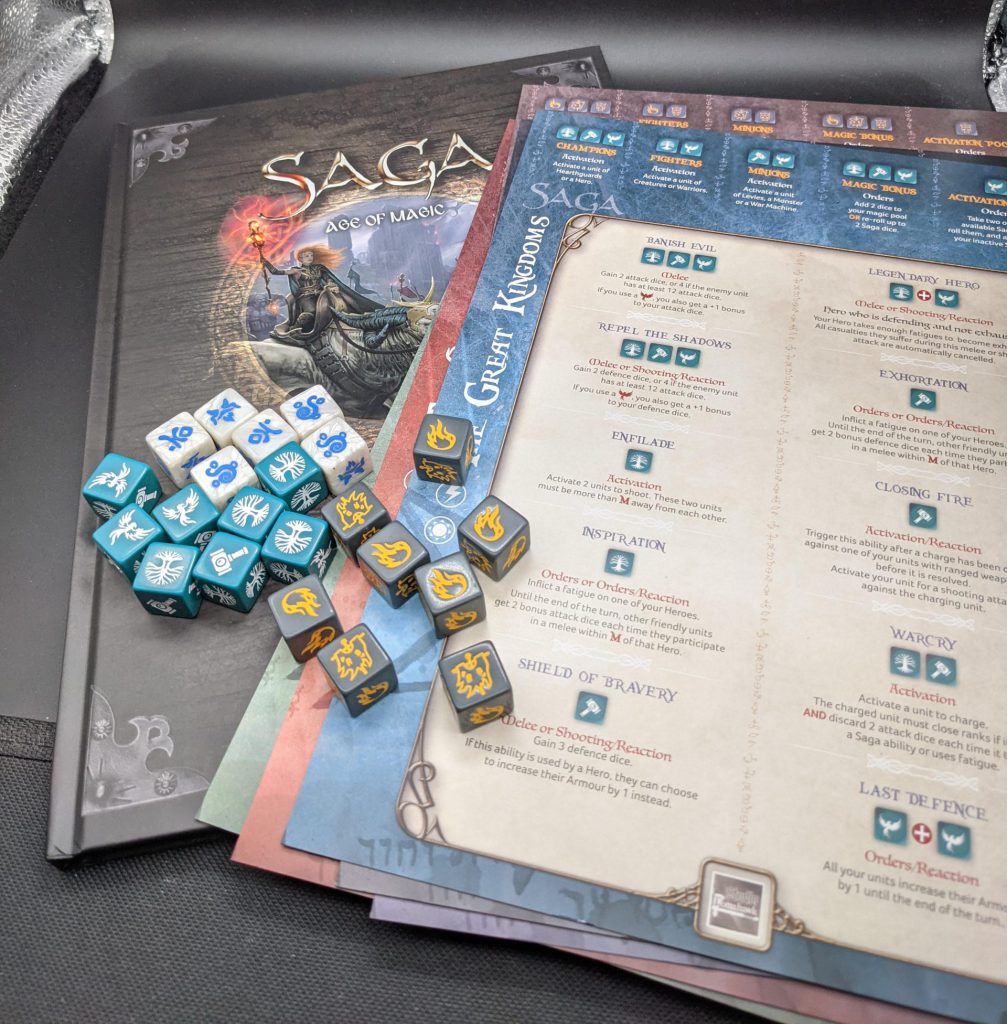

How Does It Play?
SAGA is a game of two phases: the Orders Phase and the Activation Phase. During the Orders Phase, you place SAGA dice on your faction’s battle board, and then discard them to unlock powerful abilities affecting your entire warband (or sometimes your opponent’s entire warband), or to alter the battlefield in some way — looking at you, Pagan Rus and your blizzard-summoning abilities! During the Activation Phase, you use SAGA dice to tell your warriors to go crush the enemy, charging headlong into melee, loosing hails of arrows, or maybe storing up a Reaction ability to use in your opponent’s turn.

This is where the beauty of SAGA lies; while the core rules are really, really simple, the complexity (and strategy) comes in thinking ahead, planning your Activations, Reactions and Orders in advance, and also in managing Fatigue. Units can Activate any number of times in a given turn, in theory; but after their first Activation, they’ll pick up a Fatigue marker, representing your warriors pushing themselves to the limit of their endurance.
Once a unit has 3 Fatigues, it’s Exhausted, and can’t do anything until you tell it to Rest. Fatigues can also be used by a canny opponent: once a unit is in Melee, a unit’s Fatigues can be discarded by the opponent to reduce that unit’s Armour (or increase the Armour of the opposing unit), representing your warriors becoming less effective the longer they fight.
It’s an ingenious system, not just for its simplicity but for the depth of play it permits once you’ve really mastered all the nuances involved. Add to that, each faction has a completely unique battle board, and there’s suddenly a surprising amount of depth for a game that, at its core, has only four unit types.
That might sound restrictive, but it really isn’t; SAGA is divided into (at the time of writing) five books, each covering a distinct historical Age. Each of these Ages cover the major historical players of that period, be they the eponymous Norsemen of the Age of Vikings, the Crusaders and Saracens of the Age of Crusades, or the ranked phalanxes of Alexander’s Macedonians in the Age of Alexander.
No two warbands play the same; Vikings might be really aggressive and melee-focused (as they should be), but they play completely differently to their Anglo-Saxon counterparts, who are not only incredibly defensive, but encourage you to build a warband composed of peasant Levies fighting in unison, as opposed to the more Warrior-heavy Vikings. And that’s to say nothing of the Normans, who eschew most foot-based units for hit-and-run cavalry tactics and archers that fire in great arcing volleys from the other side of the table…
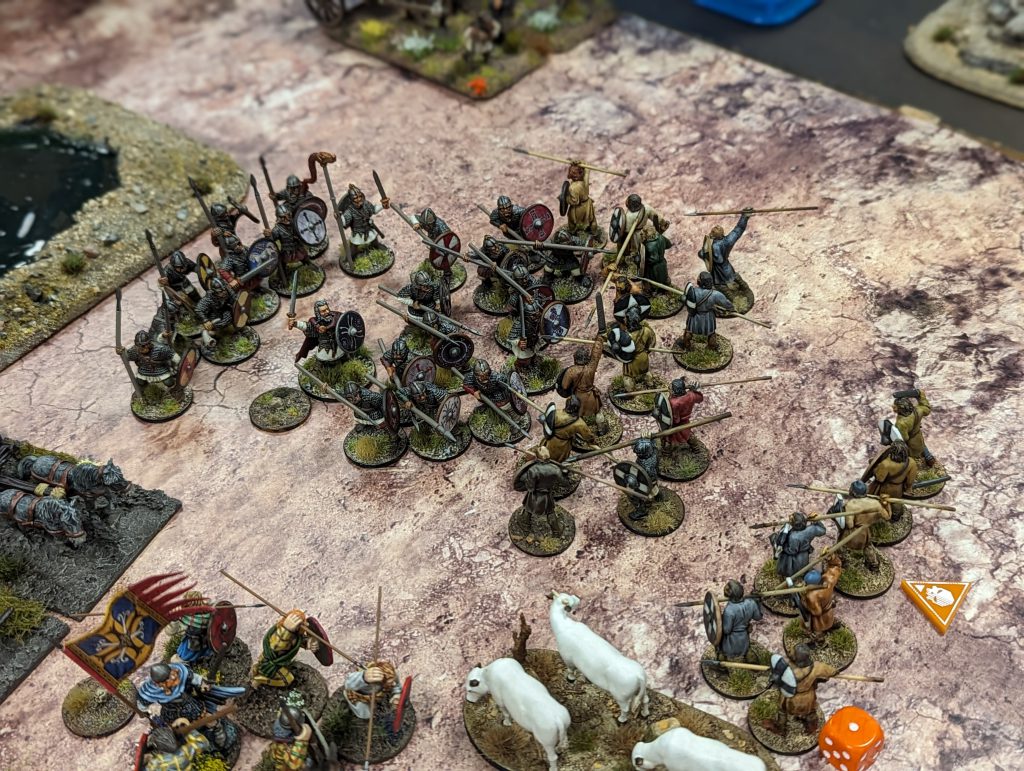
Each of the 50+ distinct factions covered by these five books fundamentally use the same four unit types of Warlord, Hearthguard, Warrior and Levy – but thanks to the mechanics of the battle board, and a couple pieces of faction-specific equipment and options throw in to taste, no two factions ever feel the same.

How Many Ages Are There?
Good question! Here’s a quick breakdown of all the books at present…plus a few more in the pipeline:
- Age of Vikings
- The classic, the OG, the one we all start with. Covering most of Europe from (roughly) 793 AD up until the Battle of Hastings in 1066 AD, the Age of Vikings contains rules for Vikings, Jomsvikings, Carolingians, Irish, Scots, Welsh, Norse-Gaels, Pagan Rus, Anglo-Saxons, Anglo-Danes, Normans and the Last Romans in the Byzantine Empire.
- You’re always guaranteed to get a game with Age of Vikings, and the factions within lend themselves to a decent range of playstyles.

Two of THE BEST Age of Vikings warbands I’ve ever seen at last year’s Battle Brothers doubles. How many players make a joint display board and write out an army list in poem form…? (Credit: Alex and Daniel from the London Wargaming Guild)
- Age of Crusades
- My personal favourite, and probably the book with the widest range of factions, playstyles and themes in all of SAGA. Age of Crusades covers a huge geographical area, including Western and Southern Europe, the Levant and the steppes of Eastern Europe from the dawn of the Crusades up until (in theory) the fall of Constantinople in AD 1453.
- Age of Crusades introduces the concept of sub-factions to the game, with the Crusaders faction split between Baltic Crusaders (heavily armoured knights crusading against the pagans of Northern Europe, backed by a reserve of well-equipped ranged levy) and Levantine Crusaders (focusing more on the militarised pilgrims journeying to the Holy Land). Other subfactions include the Eastern Princes, who cover both the Rus kingdoms of Novgorod and Kyiv as well as the princedoms of pre-Christian Lithuania. Elsewhere, you’ve got the Byzantines, the Moors, the Mongols, the Saracens, the Teutonic Order, the Military Orders (or Milites Christi as they’re known), the Pagan Peoples (think Northern Europe), Polish, Spanish and the Mutatawwi’a.

The Eastern Princes (Rus subfaction) ride out! (Credit – Goremaw from the London SAGA Mead Hall)
- Age of Invasions
- A really fun book and one for Total War: Attila lovers. Only eight factions – Goths, Picts, Huns, Romans, Sassanids, Britons, Saxons and Franks – but boy, do you get bang for your buck. Featuring some of the most interesting battle boards in the game (admittedly most of which focus strongly on melee) Age of Invasions factions are just fun.
- The period covers the mass migrations across Western, Eastern and Southern Europe around the fall of the Western Roman Empire, and introduces the Limes campaign, a two-player asymmetric campaign system allowing players to recreate the experience of a Roman garrison trying to hold out against a barbarian invasion.

ELEPHANTS. Age of Invasions is a great excuse to slap some powerful pachyderms on the tabletop, as this Sassanid war elephant shows. (Credit – Ne Cede Malis)
- Age of Hannibal
- SAGA steps into the age of Antiquity! As the name suggests, this covers the Roman Republic and their mortal foes, the Carthaginians, with attention also given to the Gauls, Greeks, Iberians and Numidians.
- The book also introduces rules for ‘Epic SAGA’, a way to play massive, Apocalypse-scale games of SAGA. Age of Hannibal kicked off a wave of interest in Antiquities SAGA, so much so that Studio Tomahawk quickly followed up with…
- Age of Alexander
- …and it was a huge success! Age of Alexander really kicked up a notch where Hannibal left off; so much so that there’s still a fan perception of Alexander having received a lot more love at the design stage, with each faction boasting subfactions, alternate playstyles and really well designed battle boards.
- As well as the titular Macedonians of the all-conquering Alexander the Great and his Successors, you get the Persians, the city states of Greece (yes, this is the book you want if you’re re-enacting 300, and yes Spartans are great), but also – most interestingly – the Indians and Thracians. Indians (of any period outside the British Raj) don’t get much representation in wargaming, so SAGA’s decision to introduce the Antiquity-era Indians is a really fun one.
- Age of Magic
- Finally, SAGA went fully fantasy in Age of Magic, which takes a ‘sandbox’ approach to army building. Instead of unique historical factions, Age of Magic lets you pick an ‘archetype’ for your faction, whether it’s the traditionally heroic and beleaguered human-equivalent warriors of the Great Kingdoms, the subterranean (read: dwarf and skaven) crawlers of the Masters of the Underearth, the vicious Horde, the Lords of the Wild, the Undead Legions or the Otherworld.
- Basically, this is the book for you if you want to build a fantasy warband and then find rules to match. An angelic host of sky-iron clad warriors might decide to use the hero-centric abilities of the Great Kingdoms battle board, for example, or they might pick the (far more esoteric) Otherworld battle board if they’re more about summoning mighty creatures and using portals to jump around the table. Age of Magic is a bit less detailed than some of the historical Ages, but it’s still great fun, and as the name suggests it introduces actual magic spells into SAGA, with the rare achievement of being fun to use without breaking the game.

And of course that’s not all. Soon to release in 2024 is Age of Chivalry, taking SAGA into the Hundred Years War, with a strong focus on Western Europe, and then it’s Age of Caesars, rounding out the Antiquities trilogy with the legions of Imperial Rome (and, I hope, the chance to build cool factions like the slave revolts under Spartacus, the proud Dacians, and the people of Judaea). And after that? Anyone’s guess – but Studio Tomahawk have hinted, in no particular order, at an ‘Age of Mythology’ supplement, and there’s an amazing fanmade Age of Samurai supplement which generated so much fan interest that Studio Tomahawk took note.
Can I Mix and Match Ages?
You noticed I mentioned that all the Ages use the same core rules, so if you’re thinking ‘can I really pitch my Crusader knights against those pagan Vikings?’ then yes, yes you can. Although SAGA’s roots are historical, it also works really, really well as a kind of ‘Deadliest Warrior’ wargame, pitching the best and bloodiest of each era against each other. It’s a surprisingly successful formula, and for my gamer friends I tend to pitch SAGA as ‘For Honor: The Wargame’. Or sometimes I refer to it as the tabletop version of Mount and Blade Bannerlord.
Mixing Ages also works surprisingly well mechanically. There aren’t many games that manage (broadly) to balance wildly diverse factions with very different rules and themes in a single ruleset, but SAGA, by accident as much as by design, does a decent job of it. It’s not always perfect – I don’t recommend pitching Hannibal’s Carthaginians against the Mongol Golden Horde, for example – but it’s guaranteed to at least be fun.
Still, it’s perfectly acceptable to play SAGA in a historically purist fashion from a single Age book, and there are events out there catering to both types of play. The ‘Age of Melee’ format (pitting all Ages against each other in a glorious free-for-all) is gradually being subsumed by events splitting the Antiquities (Age of Alexander and Age of Hannibal, soon to be joined by Age of Caesars) from the Dark Ages (Age of Invasions and Age of Vikings) and from the Medievals (Age of Crusades and soon-to-be-released Age of Chivalry).
It’s also worth noting that an increasing number of players take more inspiration from other settings and use SAGA as a sandbox. For example, here’s an amazing Rohirrim force by Mattias, who runs them as Goths from Age of Invasions:
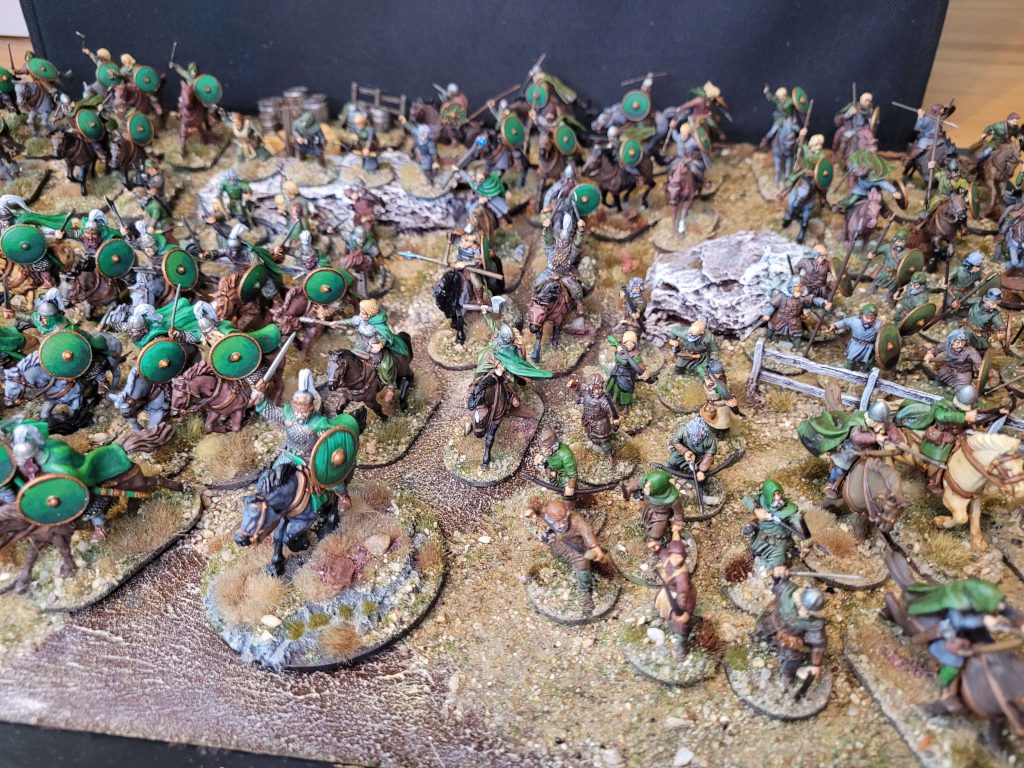
My own Black Order army project – existing in a completely unique setting of my own design – is also frequently used in SAGA as a Teutonic Order force, as that was their historical inspiration, or sometimes as Eastern Princes, Crusaders or Carolingians.
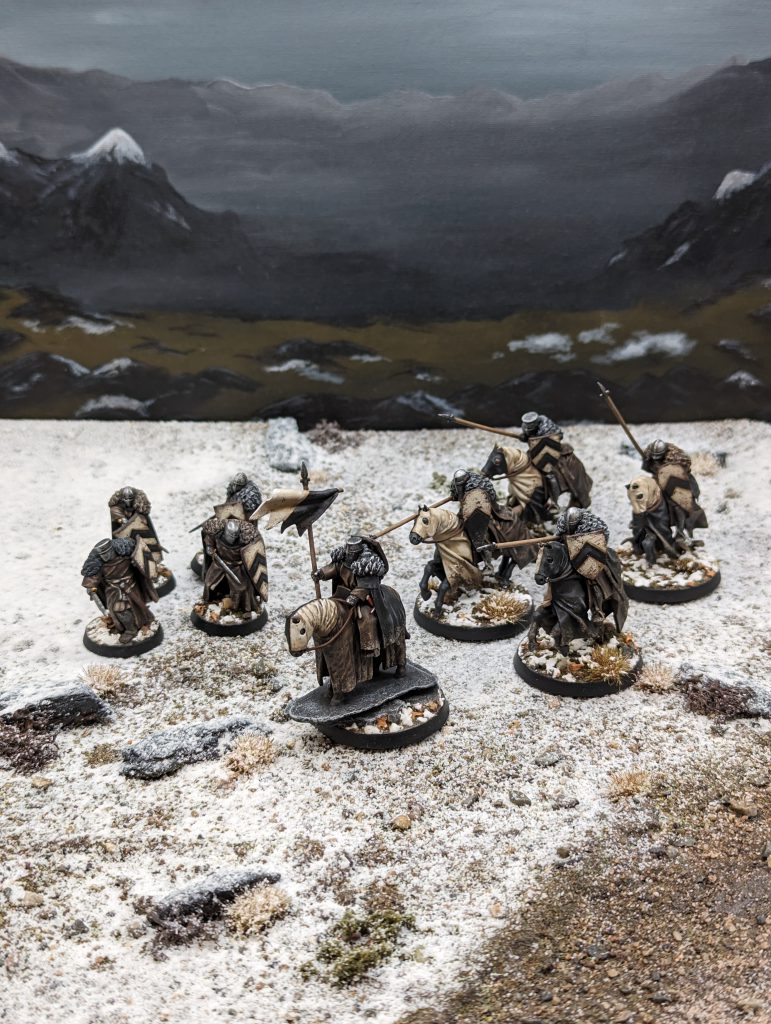
So there’s a lot you can do with SAGA – whether strictly historical, or historical fiction, or all-out fantasy!
How Do I Get Started?
To start SAGA, you need a rulebook, an Age book, and a bag or box of figures. That’s it.
Whilst SAGA uses bespoke faction dice, and has measuring sticks, you don’t need those at all – individual D6s can do the job for faction dice just fine, as there are only three facings on each SAGA die corresponding to pips on a D6 (Common = 1-3; Uncommon = 4-5; Rare = 6). A tape measure will do you just fine, and the Battle Boards for every faction are included with an Age book.
As for figures, that’s where the beauty of historicals comes in. If you’ve been reading Goonhammer articles for a while, you might have noticed a common theme among the historical crowd, and that’s that it’s much much cheaper to collect historicals! For example, a great starting point for Age of Vikings (from the Gripping Best website, if you’re in the UK, and Badger Games if you’re in the USA) would be:
- SAGA rulebook (£12 GBP / $17 USD)
- Age of Vikings (£32 GBP / $45 USD)
- Victrix Vikings £42 GBP / $46 USD)
…and that’s it. You can buy the SAGA dice (£14) once you’re hooked (because runic dice are awesome), but you don’t need them to get playing. A single bag of Victrix vikings gets you a whopping 60 figures, which is more than enough for an entire Viking warband with extras left over. One of your Vikings needs to be a Warlord (I recommend popping Warlords on a 40mm base, because it’s legal, looks awesome, and makes it easier for your Warlord to buff his entourage) and the others can be split to taste between Hearthguard, Warriors and Levy.
I recommend the following starter list if you’re doing Vikings with the Victrix kit:
- Warlord
- 4 Hearthguard (Berserkers)
- 12 Warriors
- 12 Warriors
- 8 Warriors
- 12 Levy with javelins
That gives you two huge Warrior units to soak up casualties and dish out the pain, with the Berserkers standing in the second line next to your Warlord ready to rush in to the fray and wipe out enemy units with a lot of Fatigue. Meanwhile, the Levy with bows stand by to pepper the enemy with javelins and generally cause disruption in the name of Odin. The smaller Warrior unit can be held in reserve to be moved where the fighting is thickest. Alternatively – if you want to maximise the number of SAGA dice – just deploy all your Warrior units in 8-strong units.

The other thing to note is that a lot of factions in SAGA can use the same figures, and often a faction will have multiple subfactions. So your Vikings can also be played as Jomsvikings or Pagan Rus, and your Knights Templar can be fielded as Crusaders (either of their two subfactions) or Milites Christi. Similarly, a box of Victrix hoplites can be fielded as any of the Greek factions in Age of Alexander or Age of Hannibal, or even as mercenaries working for Persia. Whatever you buy, you’re never limited to one faction!
So, that’s SAGA in a nutshell. It’s an amazing system; easy to learn, fun to play, with surprising tactical depth. With (at the time of writing) over 50 distinct factions, you’ll never get bored, and the game’s creators, Studio Tomahawk, are about to unlock the Hundred Years War in this year’s forthcoming Age of Chivalry supplement (to be followed by Age of Caesars, for those of you – like me – who grew up with Gladiator on repeat). The game’s only going to get bigger, and with scenes in the US, UK, Scandinavia, France and Germany all growing exponentially, it’s a great time to join the SAGA community of shieldwall enjoyers.
Have any questions or feedback? Drop us a note in the comments below or email us at contact@goonhammer.com.

